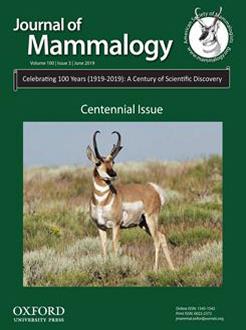Mammalian biodiversity exhibits strong geographic gradients that correspond to variation in the physical environment (habitat, area, climate, and landforms) and reflect biogeographic processes that have unfolded over millennia. Principal among these patterns are the species–area relationship, as well as latitudinal, elevational, and topographic gradients. We review these gradients for mammalian assemblages of today and over geologic time. Contemporary gradients are for the most part general. Nonetheless, variation across different phylogenetic and ecological subsets of continental mammalian faunas illuminates the multifactorial, historical nature of biodiversity gradients in terms of the diversification history of clades, variation in resources that support species with different ecological traits, and changes in landscapes over time. Accordingly, future work should integrate modern and historical patterns of taxonomic richness with phylogenetic and functional diversity of different clades and ecological subsets of continental faunas. Changes in global climate and land use are disrupting the integrity of biogeographic patterns. Insights from the study of gradients of mammalian biodiversity should address the challenges of conservation in a rapidly changing world.
How to translate text using browser tools
11 July 2019
Gradients of mammalian biodiversity through space and time
Richard D. Stevens,
Rebecca J. Rowe,
Catherine Badgley
ACCESS THE FULL ARTICLE

Journal of Mammalogy
Vol. 100 • No. 3
July 2019
Vol. 100 • No. 3
July 2019
biogeography
Elevational gradient
fossil record
functional diversity
latitudinal gradient
phylogenetic diversity
species richness gradient





